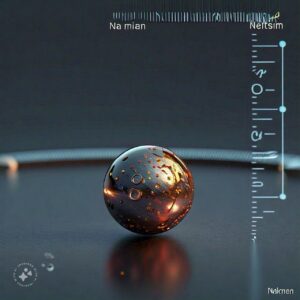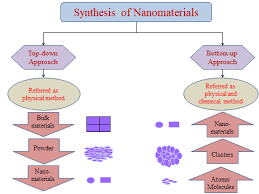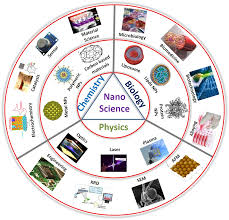One billionth is represented by the unit prefix nano (symbol n). This prefix, which is mostly used with the metric system, indicates a factor of 10−9, or 0.000000001. Prefixing units of time and length with it is a common practice in science and electronics.
A composite material with two or more phases, one or more of the constituent phases on the nanoscale scale in at least one dimension, is referred to as a “nanocomposite.”The term “composite nanoparticle” refers to nanomaterials with a composite structure made up of two or more nanoscale components with unique chemical and physical characteristics. Interfaces for mutual contact arpresent between the corresponding parts.
The cutting-edge technology of the twenty-first century is nanotechnology, and researchers are paying close attention to materials on the nanoscale. Research in this rapidly developing multidisciplinary field focuses on atoms and molecules in clusters at the nanoscale. It is the methodical investigation of materials whose characteristics are highly reliant on length scales on the order of nanometers. Nanoscale materials are potential prospects for the finest scientific and technical advancement in a number of disciplines, including communications, electronics, energy, environment, information, biology, pharmacy, health care, and medical care, because of their innovative and better qualities.

Since gold nanoparticles are small and have a huge surface area, they have special properties that set them apart from bulk gold. Among these qualities are a few of them:
Color: Because of their ability to absorb and scatter light, gold nanoparticles appear red or purple.
Melting point: Compared to bulk gold, gold nanoparticles have a lower melting point.
Reactivity: Because of their enormous surface area, gold nanoparticles are more reactive than bulk gold.
Solubility: Water or other solvents can be used to make gold nanoparticles soluble.
Catalytic activity: In some chemical reactions, gold nanoparticles can function as catalysts.
It is possible to customize the properties of gold nanoparticles for use in electronics, medicine, and catalysis by adjusting their size, shape, and surface chemistry.
Methods
Although there are several ways to make nanocomposites, these two are often used ones:

1.Top-down approach: In this approach, bigger particles or materials are reduced in size to the -nanoscale by employing a variety of methods, including:
-Ultrasonication
-Mechanical milling or grinding
-Energy-dense ball milling
-Reduction by electrochemistry
2. Bottom-up approach: In this approach, individual atoms or molecules are used to construct nanomaterials through the use of methods such as:
– Chemical synthesis, such as the sol-gel method
The two types of vapor deposition are chemical (CVD) and physical (PVD).
– MBE, or molecular beam epitaxy
By adjusting the size, form, and distribution of the nanoparticles or nanofibers within the material, these techniques enable the production of nanocomposites with particular characteristics.

Because of their tiny size and high surface area, manufactured nanomaterials have special and desirable features. Several of these attributes consist of:
1. Confinement effects: Special optical and electrical characteristics, such as increased reactivity and modified spectrum features, are brought about by quantum confinement.
2. Surface effects: Greater reactivity and surface area result in enhanced drug transport, sensing, and catalytic activity.
3. Mechanical properties: greater grain boundary area and decreased defect density result in improved strength, toughness, and elasticity.
4. Structural characteristics: Advanced applications are made possible by tunable porosity, high aspect ratios, and customized crystal structures.
5. Thermal characteristics: customized thermal expansion, increased thermal conductivity, and specific heat capacity.
6. Optical characteristics: Applications in imaging and microelectronics are made possible by size-dependent optical characteristics like absorbance, fluorescence, and scattering.
7. Magnetic properties: Improved data storage and biomedical applications are made possible by enhanced magnetic moment, connectivity, and susceptibility.
Nanomaterial fabrication covers a variety of approaches for synthesizing and shaping materials at the nano-scale. Some common ways are:
1. Hydrothermal Synthesis: An aqueous synthesis carried out at high temperatures.
2. Chemical Synthesis: Chemical reactions that result in nanoparticles, nanotubes, or nanowires.
3. Mechanical Milling: Ball milling reduces particle size.
4. Chemical Vapor Deposition (CVD): The deposition of precursors to produce nanomaterials.
5. Self-Assembly is the spontaneous organization of molecules or particles.
6. Solvothermal Synthesis: A solvent-based synthesis performed at high temperatures.
7. Sol-Gel Processing: Hydrolysis and condensation produce nanomaterials.
vaporation or sputtering.
8 Lithography is the process of creating patterns with light, electrons, or ions.
9. Physical Vapor Deposition (PVD) is the process of depositing thin films or nanoparticles using
10.Template Synthesis: Using templates to produce nanomaterials.
11. 3D Printing: Additive manufacturing on a nanoscale.
